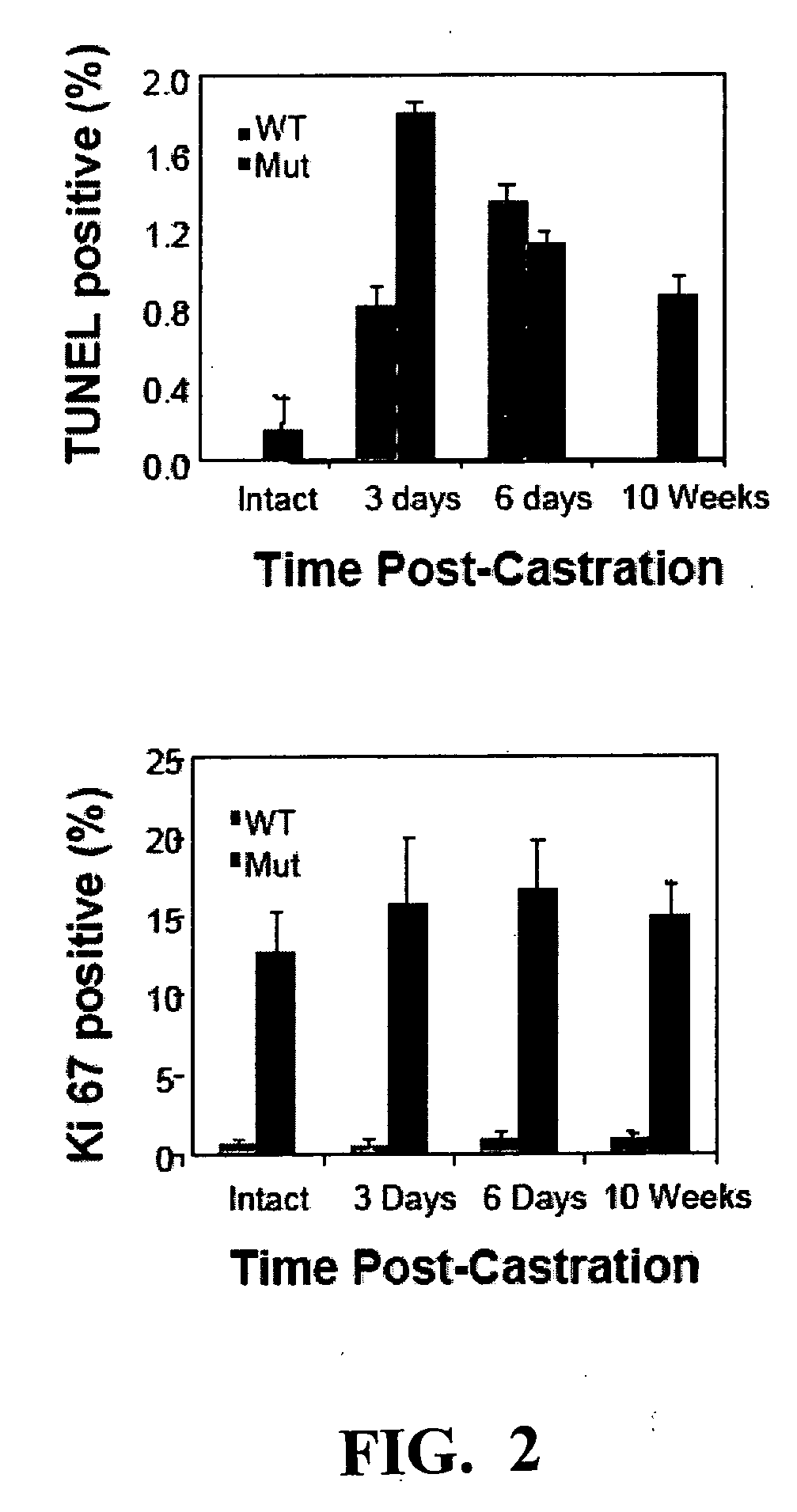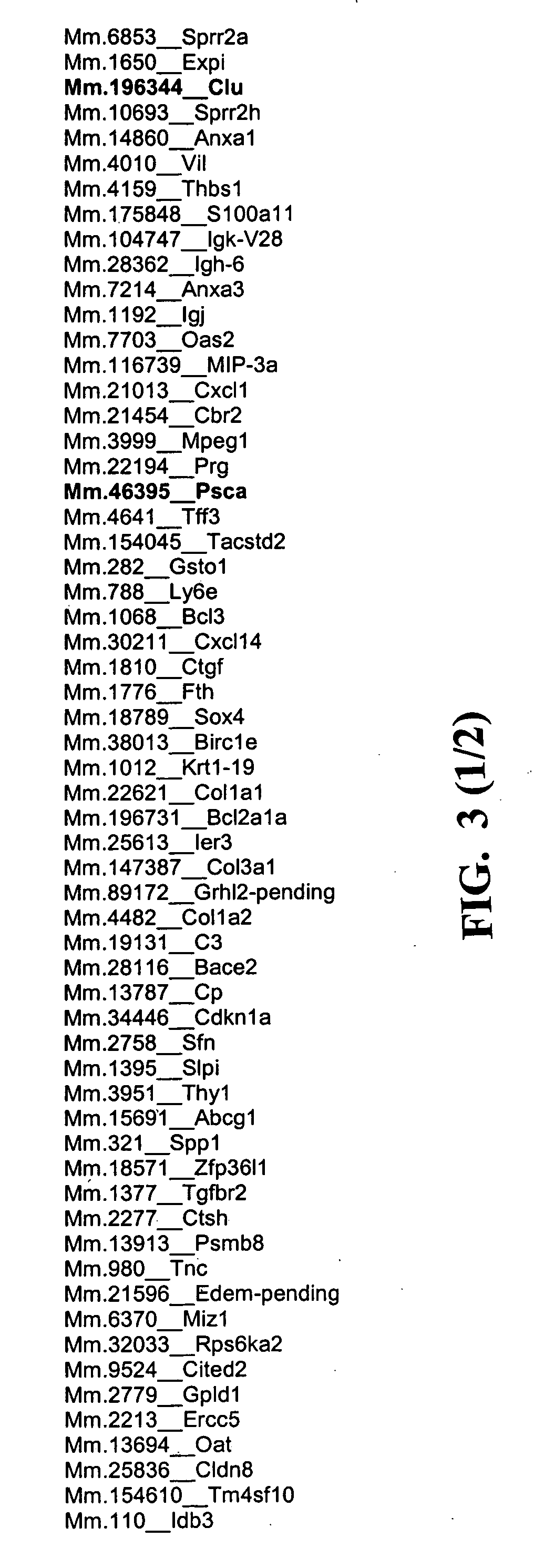Murine Pten null prostate cancer model
a prostate cancer and null technology, applied in the field of murine pten null prostate cancer model, can solve the problems of metastatic disease, inability to generate a convenient model that closely mimics the progression of human prostate cancer, and manipulation of those genes in model organisms, etc., and achieve the effect of reducing the levels of functional pten protein
- Summary
- Abstract
- Description
- Claims
- Application Information
AI Technical Summary
Benefits of technology
Problems solved by technology
Method used
Image
Examples
example 1
Generation of Prostate Specific Pten Null Mice
Experimental Procedures
Generation of Prostate Specific Pten Exon 5 Deletion PtenL / L. C: Mice.
[0202] To generate PtenL / L;C+ mice, ARR2Probasin-Cre transgenic line, PB-Cre4 (Wu, X. et al., Mech. Dev. 101:61-69 (2001)) on C57BL / 6×) BA2 background were crossed to PtenL / L mice on a 129 / Balb / c background. The males offspring with PtenL / +;C+ genotype were then crossed to PtenL / L females. Only F2 generation of male offspring was used in this study.
Histology and Immunochemistry Analysis.
[0203] Tissues are fixed in 10% buffered Formalin for 6-10 hours, followed by gentle wash and transferred to 70% alcohol. These paraffin embedded tissues were sectioned (4 μm) and stained with Hematoxylin & Eosin. All IHC staining were performed on 4 μm sections that were prepared from paraffin-embedded blocks and placed on charged glass slides. Antigen retrieval was performed by incubating the slides in 0.01 M citric acid buffer (pH 6.0) at 95° C. for 30 ...
example 2
Identification of Prostate Cancer Biomarkers
Experimental Procedures
Microarray Preparation
[0219] Custom cDNA microarrays enhanced for genes expressed in the mouse prostate were prepared on poly-lysine-coated glass microscope slides using a robotic spotting tool as previously described (Aaltomaa, S. et al., Prostate 38:175-182 (1999).). Each array consisted of 10290 unique mouse cDNAs, 4511 of which were derived from cDNA libraries of developing and mature mouse prostate (www.mpedb.org) (Nelson, P. S. et al., Nucleic Acids Res. 30:218-220 (2002)). The remaining 5779 cDNAs were chosen from the Research Genetics sequence-verified set of IMAGE clones (www.resgen.com / products / SVMcDNA.php3) and from the National Institute of Aging 15K set. The clone inserts were amplified by PCR, purified, and analyzed by gel electrophoresis. All PCR products were sequence-verified prior to spotting. Additional control cDNAs were included and some clones were spotted twice for a total of 11552 feature...
PUM
| Property | Measurement | Unit |
|---|---|---|
| Tm | aaaaa | aaaaa |
| temperature | aaaaa | aaaaa |
| temperature | aaaaa | aaaaa |
Abstract
Description
Claims
Application Information
 Login to View More
Login to View More - R&D
- Intellectual Property
- Life Sciences
- Materials
- Tech Scout
- Unparalleled Data Quality
- Higher Quality Content
- 60% Fewer Hallucinations
Browse by: Latest US Patents, China's latest patents, Technical Efficacy Thesaurus, Application Domain, Technology Topic, Popular Technical Reports.
© 2025 PatSnap. All rights reserved.Legal|Privacy policy|Modern Slavery Act Transparency Statement|Sitemap|About US| Contact US: help@patsnap.com



